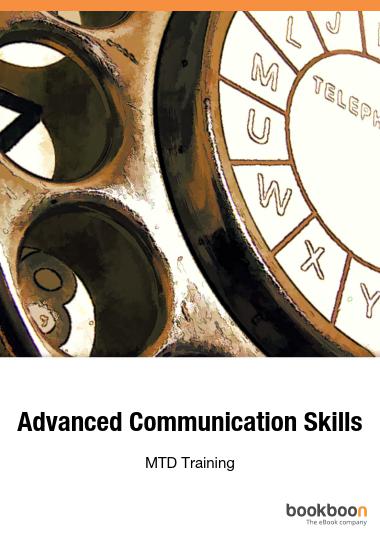6 Tools for Advanced Communication

All human interactions are a form of communication. In the business world, nothing can be achieved without effectively communicating with employers, employees, clients, suppliers, and customers. This is why the key to being a successful business person is to master the art of communication. This requires practice, finesse, and a skill set that goes beyond those that the average person possesses. Let’s take a look at a series of methods that will help you to:
- Show that you see things from the other person’s perspective
- Move the listener to a higher level of thought or past an objection
- Direct a conversation without dominating it
Linguistic tools for advanced communicators
There are helpful methods for choosing words in a way that helps the other person to feel more rapport between you, that can help you move them past a stumbling block, and that let you guide the conversation without appearing to control it. These tools are a form of ‘artfully vague’ language, meaning that you need to do this with intention in order for it to be effective. Following are examples of what we mean.
Mind reading
With this tool, you indicate with your word choice that you know what the other person is thinking. If you are accurate, you’ve strengthened your rapport and it can manage an objection before it is voiced. Examples include:
- I understand that you are concerned about the outcome, but your careful preparation will ensure success.
- Many people feel, as you do, that it’s important to demonstrate integrity in our work and product.
Lost performative
In this case, you are stating a value judgment that omits identifying the person who is doing the judging. This makes it a neutral, easy to agree with statement. It is called the lost performative because there is no indication of the source of the information. You are actually increasing your ability to control the conversation without taking and misinterpreting the other person’s point of view. Examples include:
- It’s a fact that people like people who are like themselves.
- It’s good to know that the economy is getting better.
Cause and effect relationships
This helps you put across a message when you want the other person to see the effect of what you are talking about. For example:
- Seeing you come in late makes me feel you don’t care.
- Attending this meeting will create changes.
Universal beliefs
A statement of something as a universal belief implies that there is no exception to what you are saying. You can use universal beliefs to get the person on your side and to accept or agree to what you are saying. Examples might be:
- Everyone wants to be happy at work.
- If you remain positive, you’ll see better results.
Tag questions
This tool gets the other person to think about what you said and then answer it in their mind. Since we can think about five times faster than we can talk, this can work well in building agreement.
- As we take more action, our market share goes up, doesn’t it?
- By listening more closely, you’ve learned much more, haven’t you?
Embedded commands
These are exactly what they sound like – a command in your language without actually commanding someone to do something. These words speak to the subconscious and form part of a larger context, like:
- So, looking at your priorities makes you feel better now? (Embedded command is ‘feel better now.’)
- It’s good you’ve decided to get that report finished by 2pm. (Embedded command is that you’ve decided – finish it by 2pm)
Now you should have a tool box full of tools that you can use to improve your communication skills. Remember that these skills do take time to learn, but the energy and effort that you put forth will soon be rewarded by improved relationships – both at work and outside of it.




